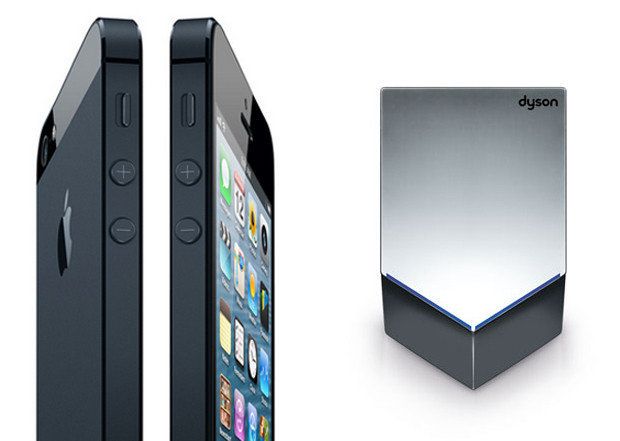
If you gave them a quick glance, you might think that Apple and Dyson have a lot in common. Both are hugely successful personal technology companies that emphasize clean, simple product design, closely associated with an iconic inventor and visionary; both have websites that feature their products on stark white backgrounds, with simple sans-serif descriptions written in plain English; both have found their successes, broadly, by disrupting stale, entrenched industries with attractive designs, intuitive interfaces and enjoyable user experiences.
When I talked to Dyson's Marcus Hartley (the lead engineer on the new Dyson Airblade Tap, and a Dyson employee for the past 9 1/2 years), however, he politely rejected my comparison of Dyson to Apple. As obvious as the pairing may seem to me, Hartley doesn't see it:
"[With our products] form follows function," Hartley said during a brief interview. "Apple makes a stylistic product; we don't have any designers at our company. We start out with the internals first and then match the style to it."
Hartley explained that the guts of the product, the engine that drives its utility, always comes first at Dyson, which he wasn't sure was always the case at Jony Ive's Apple. He doesn't mean this as an insult; rather, he thinks that the engineering process at Dyson follows a fundamentally different path than it does at Apple.
For example, Dyson's Airblade hand dryers (which you can read about here) came about as a small group of engineers at the company were working on a totally different problem and realized that the motors they had created were very efficient at blowing air-- specifically, blowing water off of surfaces. So they asked themselves: What product could we create that uses a motor that powers air that can blow water off of a surface?
A few years later, the first Dyson Airblade hand dryer made its debut; and as slick as the Airblade, and its new cousin the Airblade V, appear, the product concept began with a functional part that performed a specific operation: A gizmo in search of a purpose, in other words.
That difference, of course, is the opinion of just one Dyson engineer; the constant comparison between Dyson and Apple still persists. James Dyson has been called "the Steve Jobs of Suction" and has expressed his admiration for Jobs, and the way he simplified his products and made them enjoyable. When James Dyson unveiled his new Airblades at an event Tuesday night, he evoked the iconic Apple keynotes we've become familiar with over the past decade: We heard about how many hours had gone into testing, designing and engineering the new products; we saw the products up-close, in excruciating detail, including the insides, with plain-English descriptions of everything that made them run; we listened as Dyson detailed, monologically, all of the benefits of the new products, and what made them must-have devices for any modern buyer.
And then there were the products themselves which, clean and minimal as they were, at the very least suggested Apple's dominant (and oft-imitated) design philosophy.
Or maybe that's just my opinion. In any case, Apple's products are generally both critical as well as consumer favorites; so even if you don't agree with the basis for comparison, it's not necessarily a bad thing to be compared to Apple...